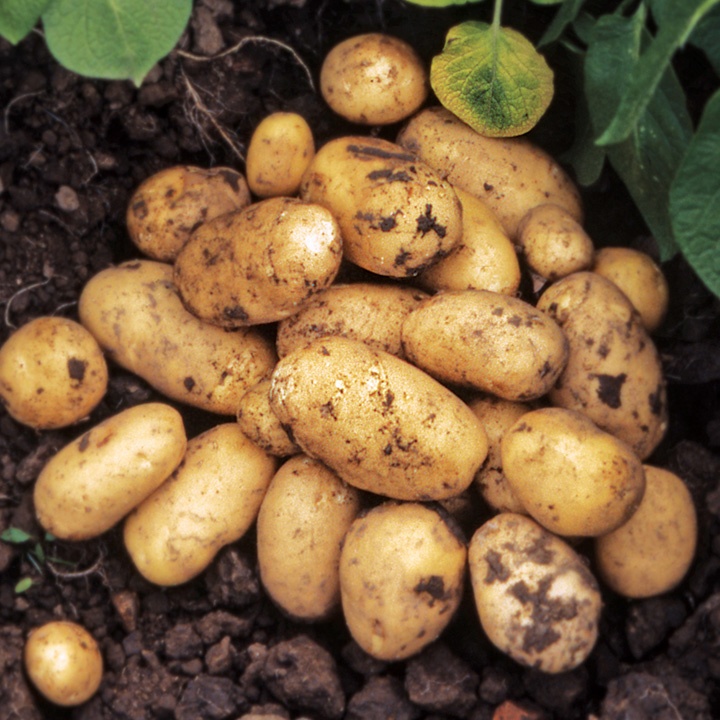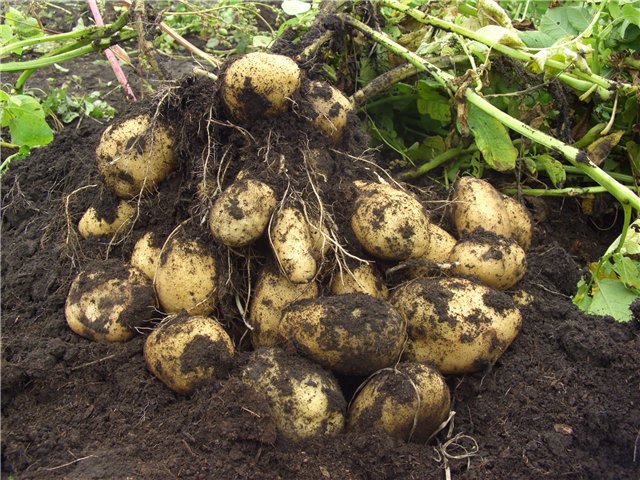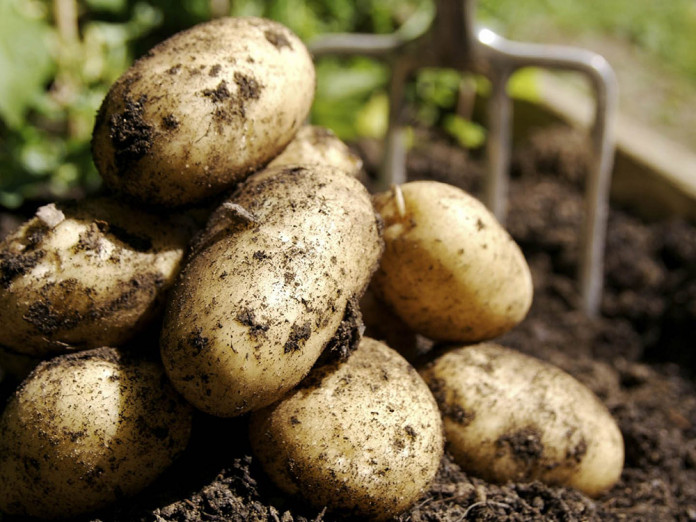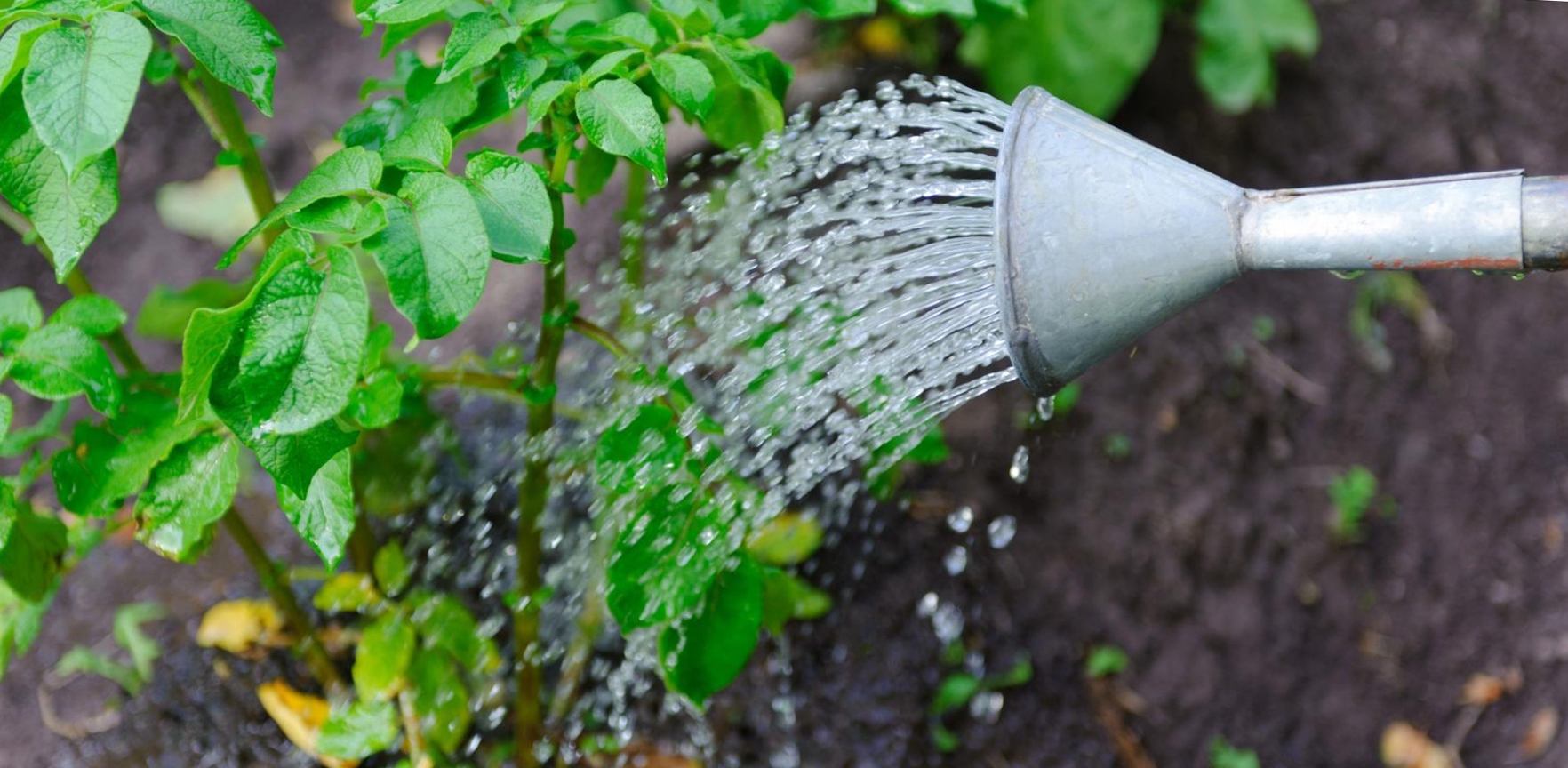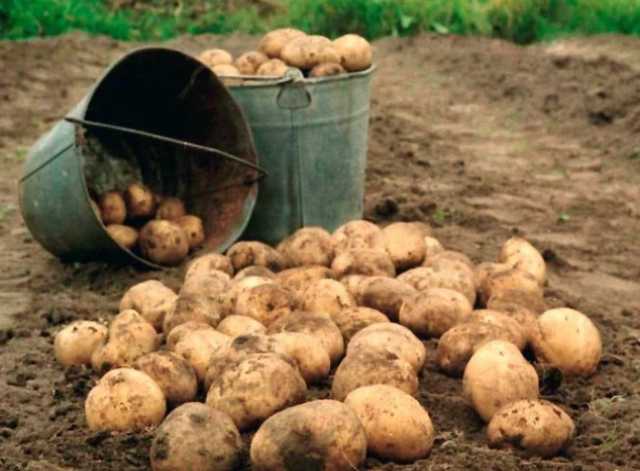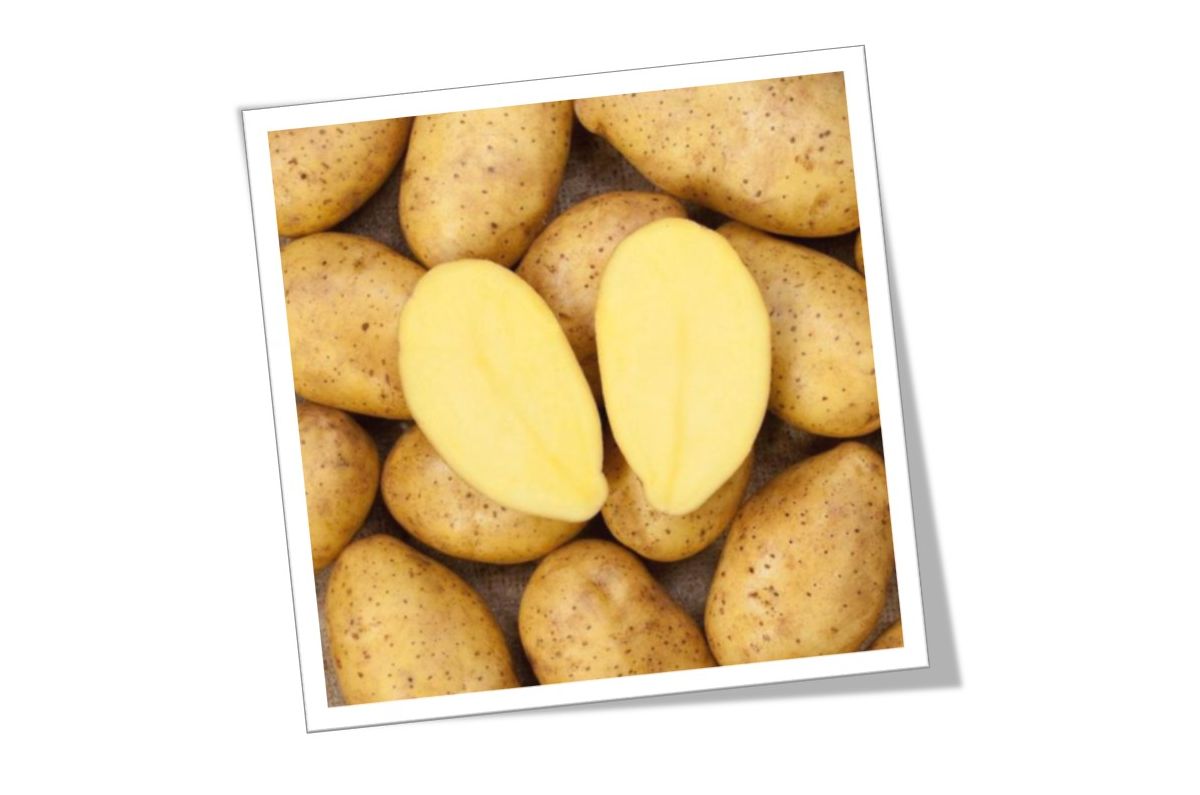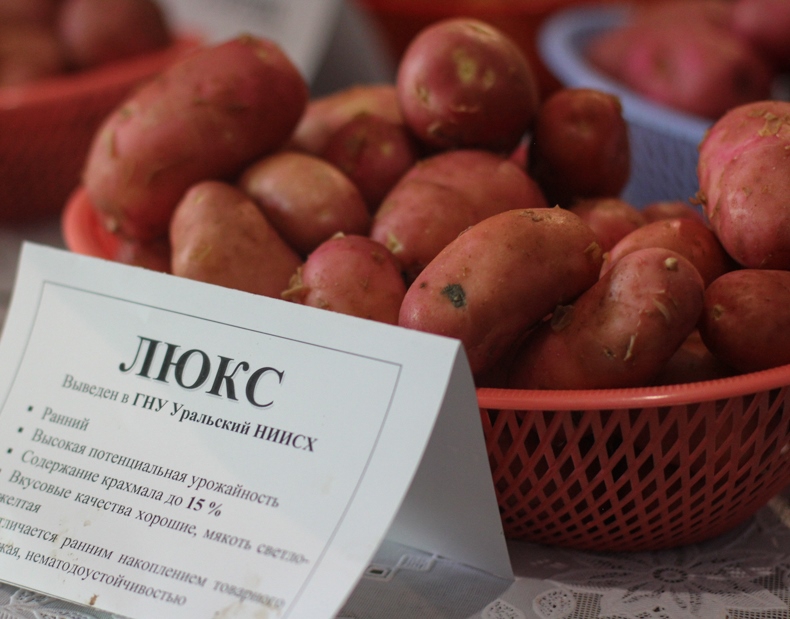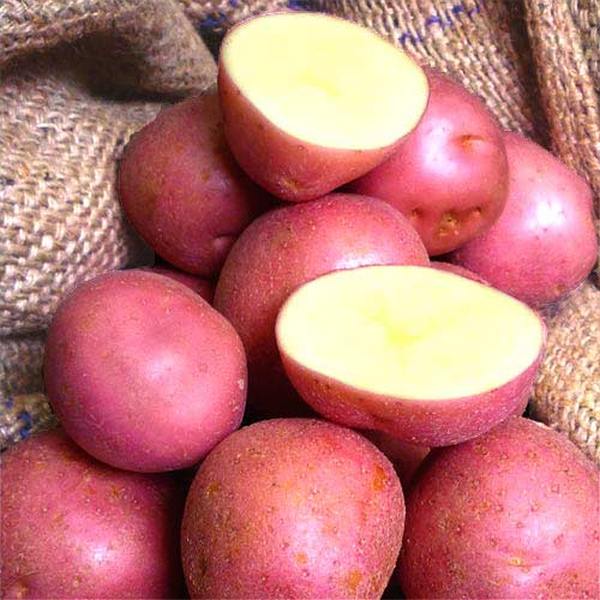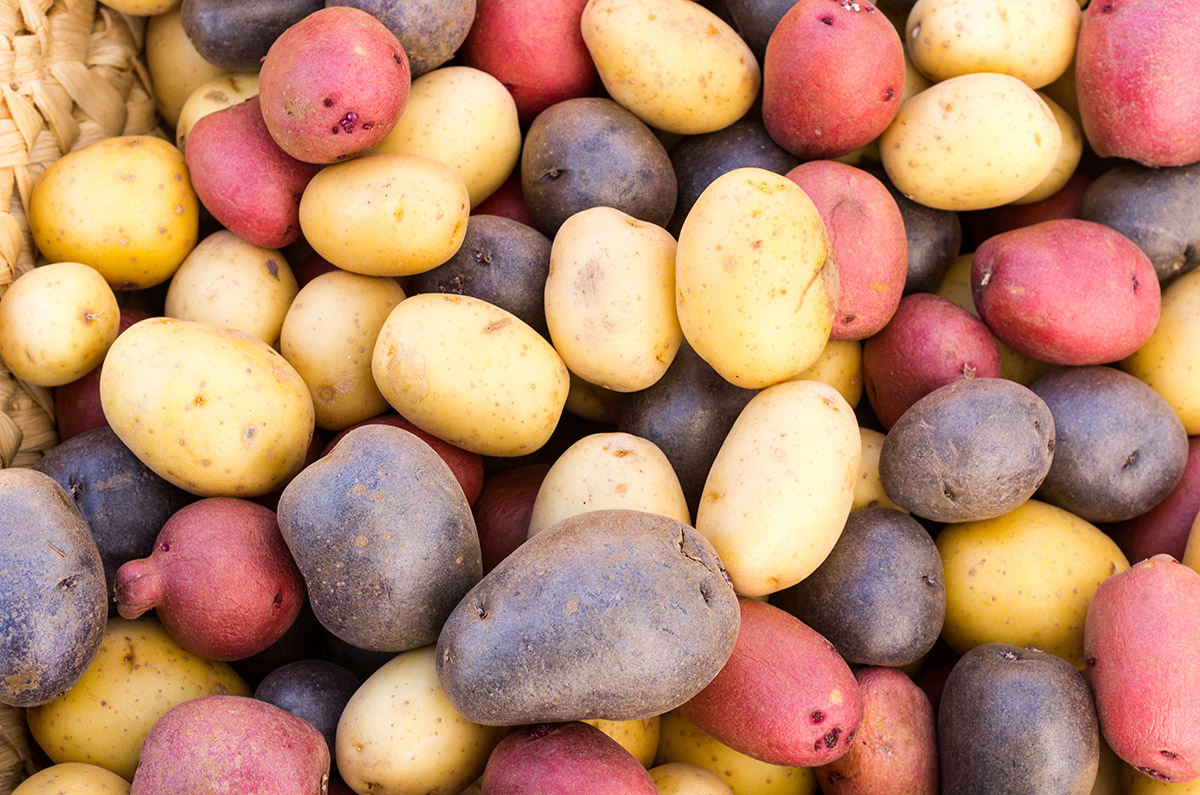Content:
Potatoes are herbaceous, perennial plants, but in culture they are grown as an annual, they form tubers. The adretta potato variety was developed in 1975 by German breeders in the GDR. Potatoes with yellow tubers were used all over the world to feed livestock, but the new high-tasting hybrid made Adretta popular all over the world.
Description of Adretta potatoes
Frost resistance
The variety is resistant to low temperatures: even frozen potatoes rarely acquire an unpleasant sweetish taste. This property allows Adretta to be grown in all regions of Russia, except for areas with arctic and subarctic climates. An unpretentious variety of potatoes is recommended for growing in the Central, Far Eastern, West Siberian regions.
Yield
Adrett's varietal potatoes produce a stable medium to high yield. A distinctive feature of the variety is multiple tubers of the same size in the nest. The number of tubers on one bush is 10-15 pieces, but with competent agricultural technology and favorable weather it reaches 20-25. The average yield from one bush is 1.5-2 kg. Up to 400-450 quintals of potatoes are harvested from one hectare.
Two harvests per season: in the middle of summer and in the middle of autumn, are obtained by gardeners cultivating Adretta.
Potato shoots appear on the tenth day, and potatoes bloom 2 weeks after shoots. Adretta blooms profusely, with white fluffy inflorescences, and during this period it especially requires watering. Lack of moisture during flowering leads to a decrease in yield and grinding of tubers.
Andretta potato characteristic
- Bush - powerful, erect, with stems 30-150 cm high.
A distinctive feature of the variety is the light green color of the tops, which retains this color throughout the growing season and does not linger;
- Leaves - simple, whole-edged, of different sizes: from small to large, light green. As the plant grows, intermittently-pinnate leaves, slightly pubescent, are formed;
- Flowers - collected in spreading inflorescences of three or four white flowers. Abundant flowering;
- Fetus - a two-celled multi-seeded juicy green oval berry with a high content of the poisonous alkaloid solanine, unsuitable for food;
- Seeds - small, flat, with a bent embryo, light yellow in color;
- Tubers - oval, with a thin light beige skin and pale yellow flesh. The average tuber weight is 130-140 g. There are few sprouts on the tubers, they are small and shallow.
Agricultural principles
Requirements for soil quality
Sandy loam, sod-podzolic soils and light loam are suitable for growing this variety in structure. Avoid areas with acidic soils, where there is a high probability of scab damage to the plant, or pre-adjust the soil pH (pH).
The soil for varietal potatoes is enriched with oxygen, when the garden bed is carefully dug up in the fall, and after the procedure they are not leveled so that pests will freeze in the soil during the winter.
Water mode
Experienced gardeners avoid planting potatoes in areas with surface groundwater. The distance to them must be at least 1 meter. Otherwise, the beds are poured. If possible, potatoes are planted on a slope to avoid stagnant moisture.
Light mode
For planting potatoes, illuminated places are selected: in the southern or southwestern part of the field. Cultivating potatoes in a shaded area will lead to stretching of the stems and subsequent deformation of the tubers.
The need for fertilizers
The lack of soil fertility is compensated for by the application of fertilizers, which can be bought in specialized stores or prepared by yourself.
It is considered correct to introduce nutrient mixtures into the hole to a depth of 15 cm. In this case, each tuber receives a complex of necessary substances.
Nutritional Formula Recipe:
- Humus - 2 cups
- Fertilizer "Superphosphate" - 2 teaspoons;
- Fertilizer "Nitrofoska" - 1 teaspoon;
- Wood ash - half a glass.
Preparing tubers for planting
Adretta is planted early, immediately after the soil warms up (in early May). Seed potato tubers are kept in the light for a month. In this case, the temperature in the room should not fall below 8 ° С at night and exceed 15 ° С during the day. Turn the tubers weekly.
Landing
Adretta's bushes are massive, so the distance between the furrows is left at 70 cm for better access to the plants. The depth of the holes should not exceed 10 cm.The distance between them is approximately 40 cm.
Care for Adretta potatoes
Watering
The variety is drought tolerant, but needs sufficient watering during the period of intense flowering. Optimal watering is 3-4 liters of water for each bush. If the planting is located on sandy loam soil, the abundance of watering is increased several times.
Watering is done by sprinkling or through specially laid furrows.
Pollination
The potato is a self-pollinating plant, but most varieties are sterile, only a few are fertile. The Adretta variety does not need special pollination.
Hilling
It is advisable to do hilling twice a season in order to retain moisture in the soil, enrich it with oxygen and for the formation of new tubers. The first hilling is done after the first 10 cm high shoots appear above the ground. The second time is when the potato bush reaches 20 cm. The best time for hilling is morning or evening.
Harvesting potatoes
The crop must be harvested on time, without allowing the long-term presence of ripe tubers in the ground. Potatoes can rot.
Storage
Andretta is a potato variety that can keep well for a long time if the storage room is ventilated. A dark and dry, ventilated cellar will do.
Advantages and disadvantages of the variety
The variety has a number of disadvantages, namely, it is often affected by late blight, scab and macrosporiosis. However, the advantages of this variety cover some disadvantages.
| Benefits | disadvantages |
|---|---|
| Stable and high yield | Sensitive to changes in humidity |
| Excellent taste | Poor bush development on dry soil |
| Resistant to stem nematode, cancer | Often affected by scab, late blight, macrosporiosis, rhizoctonia |
| Resistant to rot | Small tubers in the shade |
| Frozen tubers don't get sweet | |
| Transportation possible at low temperatures | |
| Active development of the plant, the formation of the stem, tubers | |
| Excellent shelf life, preservation of presentation, high product quality |
Adretta is popular among gardeners, despite the emergence of more and more varieties of potatoes. The unpretentious culture is perfectly preserved during the winter, and also has an excellent taste of the dishes prepared from it.
